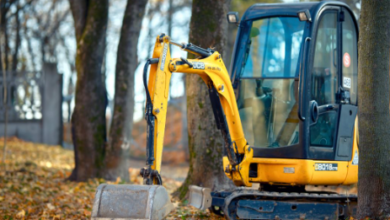Five Holistic Assessment Methods for Student Evaluation

In the realm of education, assessment of students’ progress and understanding plays an essential role which is a great tool for instructors and lecturers. The old-fashioned assessment techniques of frequently relying on standardized tests like quizzes and questionnaires include simply a fraction a student’s strengths and talents. Nevertheless, teachers progressively prefer to perform the entire assessment process by the means of holistic methods so as to have the most reliable and informative image of students’ cognitive development, their knowledge and skills. The overall assessment takes into account various factors that student’s expertise in during their learning process, such as cognitive, emotional, and social growth.
Narrative Assessments: Understanding the Whole Story
From the point of view of narrative evaluations, the teacher gets an opportunity to embrace a personalized approach towards his/her students’ progress assessment through focusing on the learners’ journey. Opposite to the traditional grading approaches that rely exclusively on the numerical valued systems, narrative assessments take more descriptive feedback through the qualitative observations and reflections. The integration of innovative education software has revolutionized the way educators conduct narrative assessments, enabling them to gain comprehensive insights into student’s progress. Teachers can make record of students’ achievement, setback and prospects by using written sentences, audio feedback or accompanying visuals. An innovative approach that narrative assessment takes helps to address the specific gaps in students’ learning and, if necessary, modify the teaching approach to more efficiently achieve goals.
Performance-Based Assessments: Demonstrating Mastery Through Action
The performance test assesses learners’ knowledge and skills by the use of realistic work done projects. On the other side, it should be remembered that the traditional tests are based on the knowledge memory and recalling while performance-based assessments which are applied in a practical situation require students to demonstrate their skills and mastery. They can take different shapes including radio shows, film, plays and exhibitions. Through participation in the real-life activities and decision-making tasks, performance-based assessment assists not only critical thinking but also the development of creativity and collaborative spirit.
Peer and Self-Assessment: Empowering Students as Evaluators
Peer and self-assessment not only drive students’ engagement but also give them the opportunity to collaborate on learning evaluation. This revitalizes their active role in monitoring own performance and others as well. In contrast to the conventional approach in which the teachers are the only source of feedback, the digital natives grade the work basing on the pre-set criteria and give constructive feedback to each other. Such approach not only constitutes students’ self-reflection skills and metacognitive abilities but also contributes to making the learning environment competitive and collaborative. In the process of peer assessment, students explore their abilities to give and receive feedback, which strengthens the development of their communication skills.
Authentic Assessments: Connecting Learning to Real Life
Authentic assessment procedures are used that tap the depth of students’ understanding in lifelike situations which mirror the functional experience. In contrast to conventional tests where the emphasis is on single tasks and memorizing, the learners have to exhibit using of their learning to tackle authentic problems and challenges by evidence in the assessment. Thus, these evaluations may involve solving real-life problems, analysis of case studies, simulation of professions, and performance tasks that imitate issues of daily living. Via student engagement, teachers can evaluate not only the mean content knowledge but also their students` program solving skills, critical thinking and decision making.
Portfolio Assessment: Showcasing Growth and Reflection
Portfolio assessment is a flexible and all-containing measure of students’ projects and achievements through the period. Rather than using only a single score to demonstrate the progress in learning, we can assess students multiple items like previous work samples, reflections, and artifacts representing their learning movement and growth. The portfolio is required to cover different items, such as writing samples, projects, artwork, multi-media pieces, and self-evaluations. Moreover, in today’s digital age, the use of an online examination system within portfolio assessment further enhances accessibility and efficiency, allowing for seamless submission, evaluation, and feedback processes. Through structuring their portfolios, they also acquire self-reflective skills, critical thinking, as well as work towards setting objectives.
Holistic approach for the evaluation opens to educators some eye-opening inputs on the overall talent of their students. Teachers’ acceptance of narration assessments, performance-based testing, peer and self-assessment, disciplined assessments, and portfolio assessments creates an equal environment that honors pupils’ abilities and talents that differ from each other. Besides, the use of holistic assessment approaches offers a more thorough investigation of learners’ learning as well as fostering such skills as critical thinking, creativity, working together, and self-reflection.


